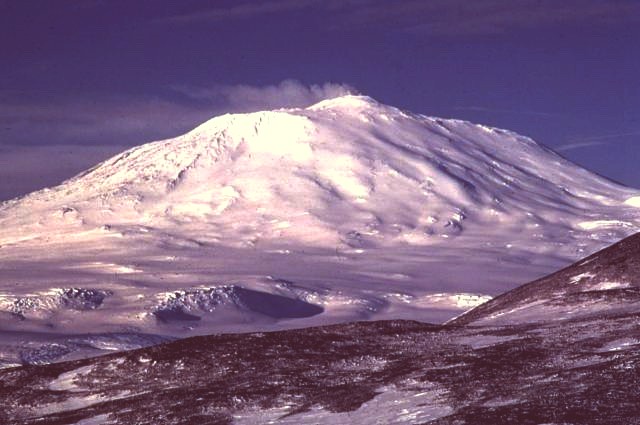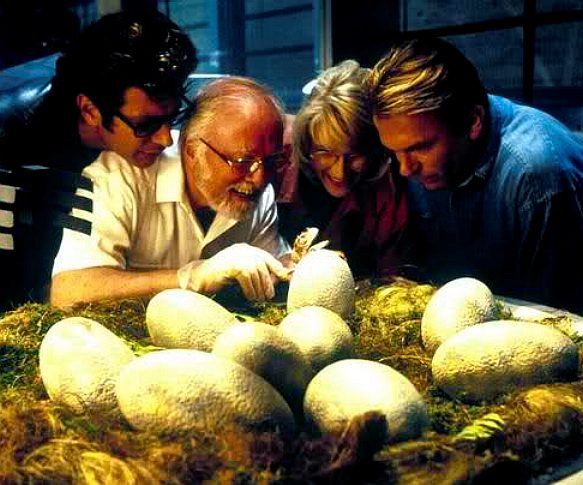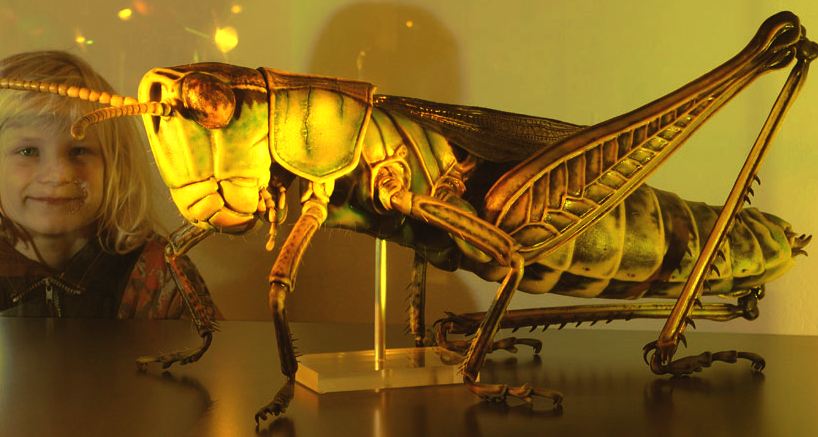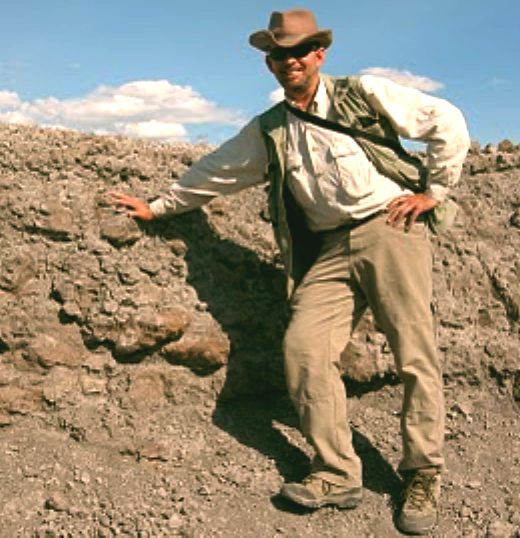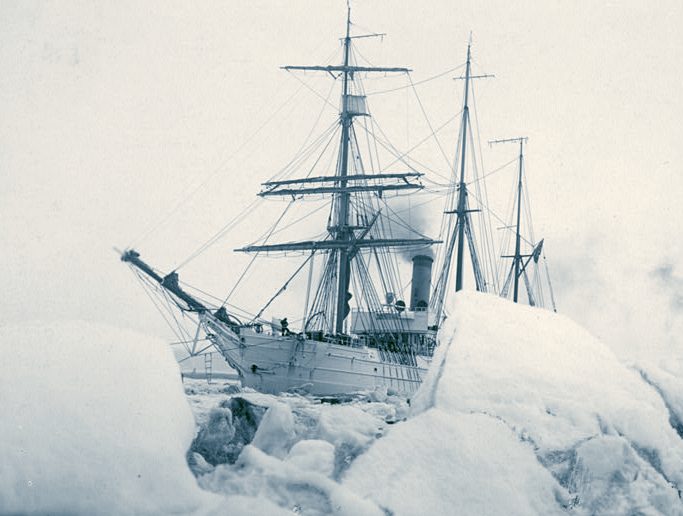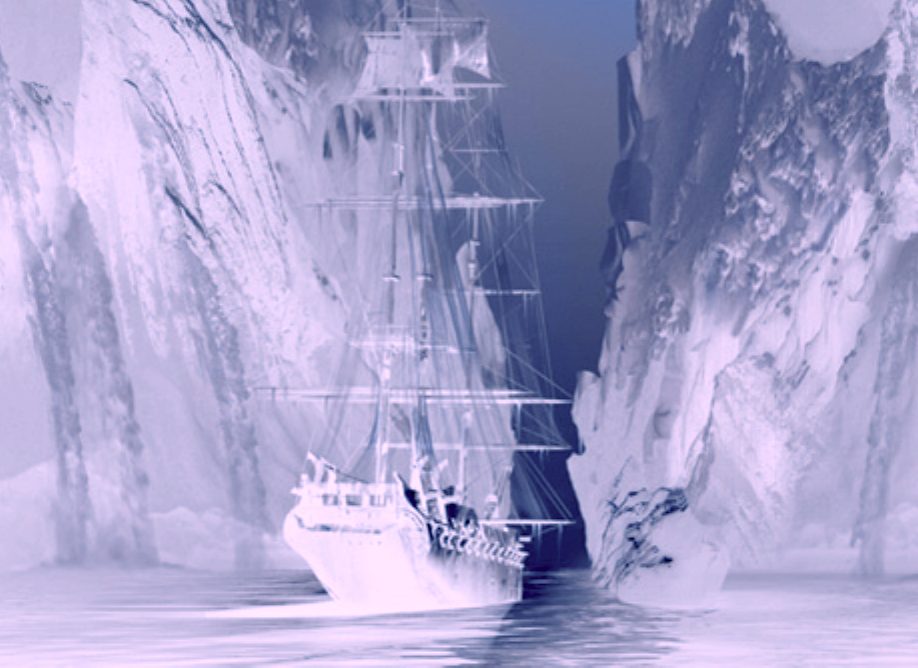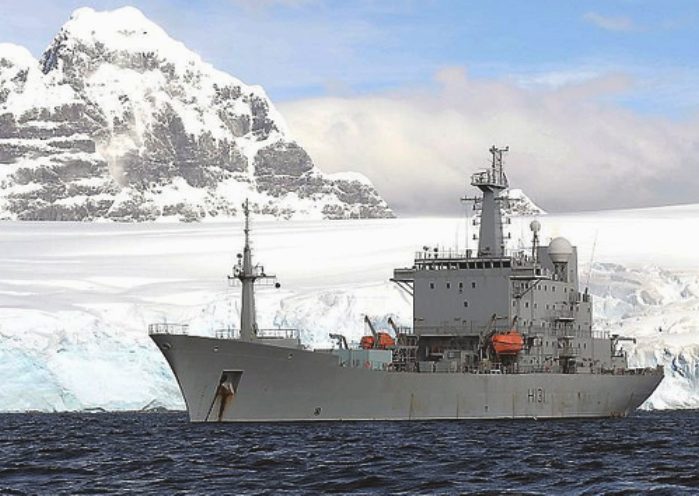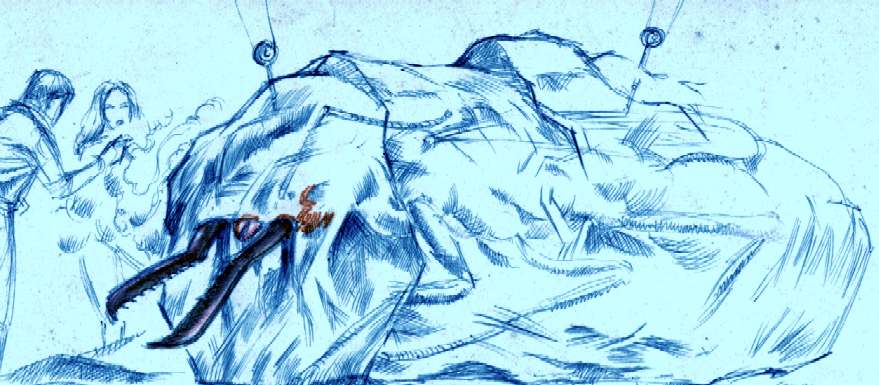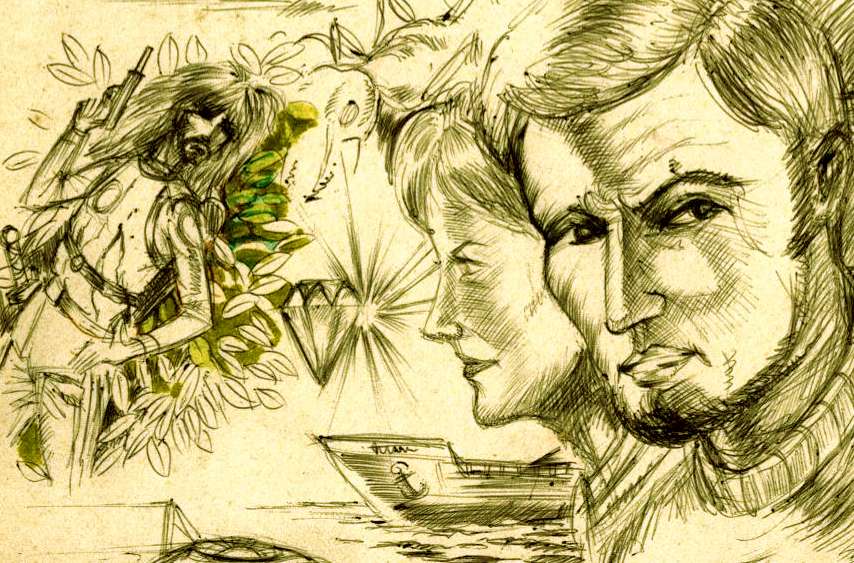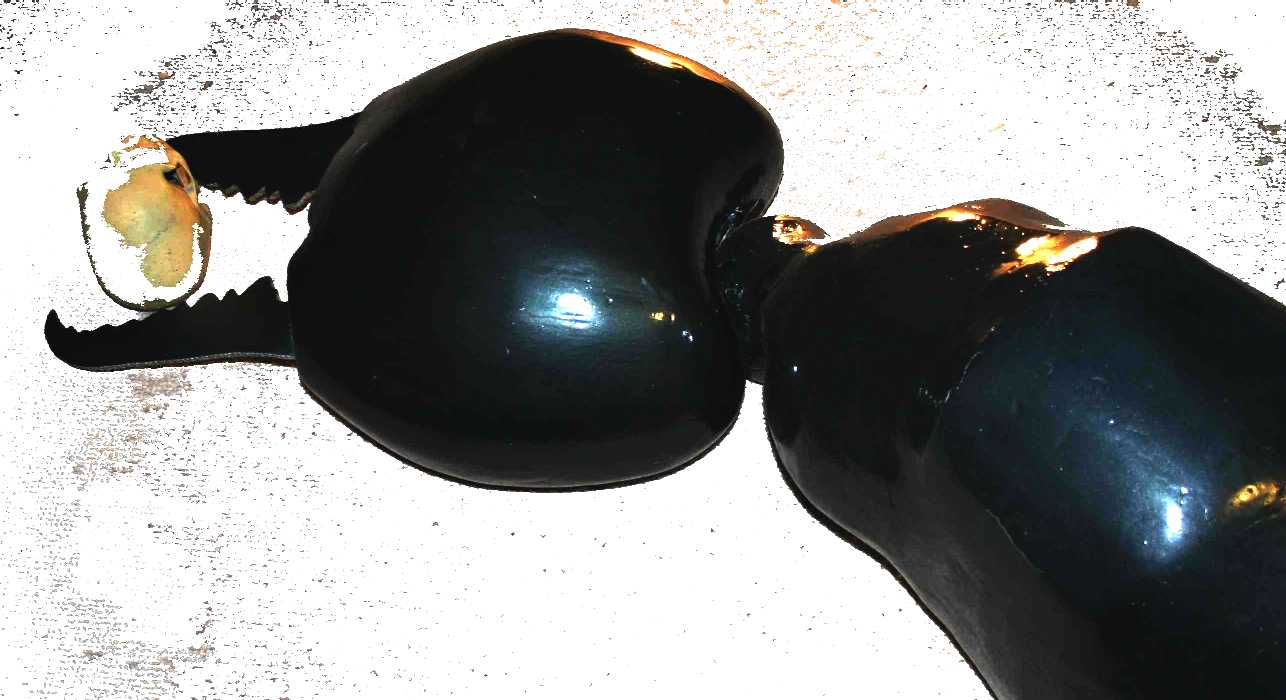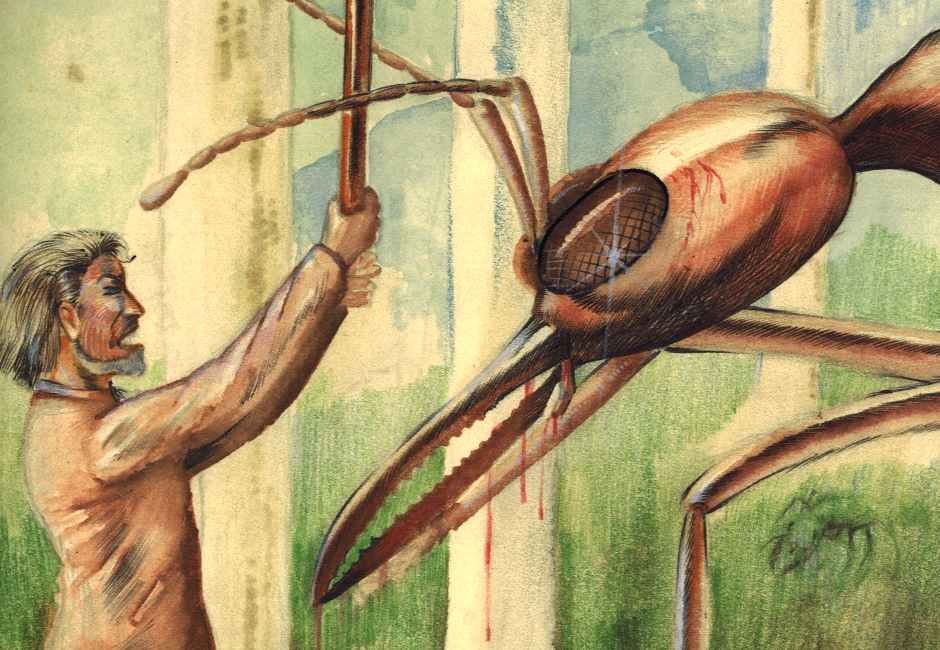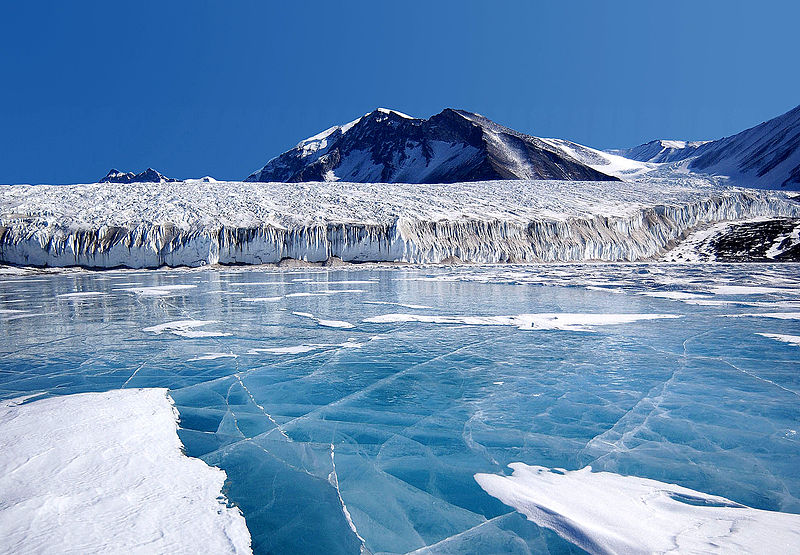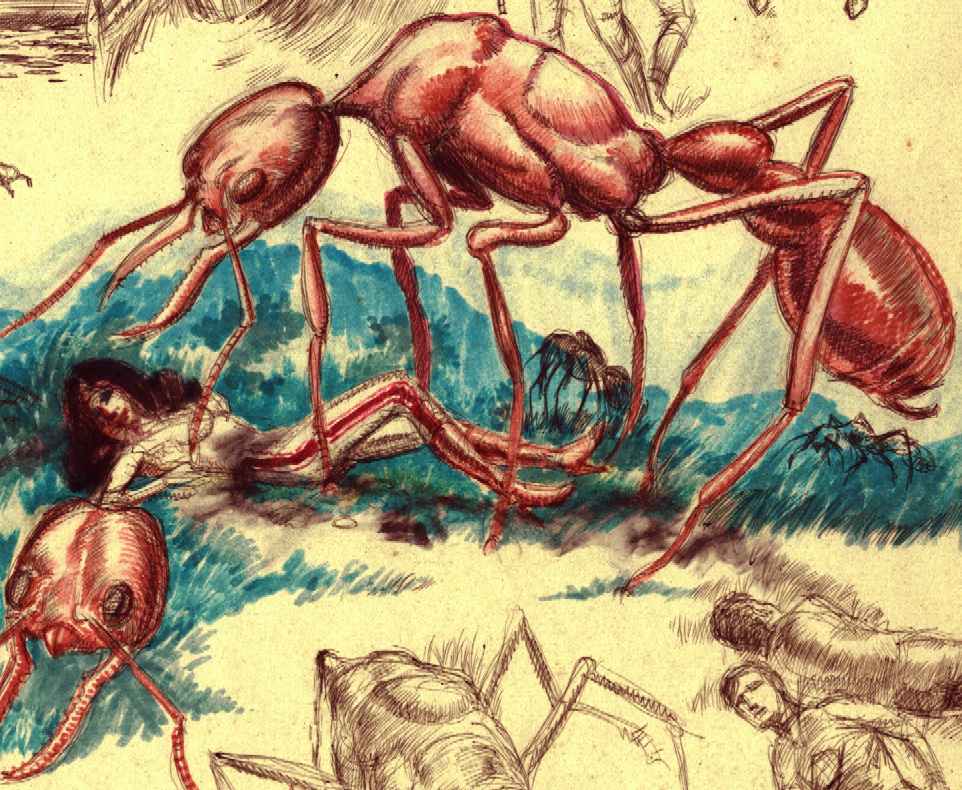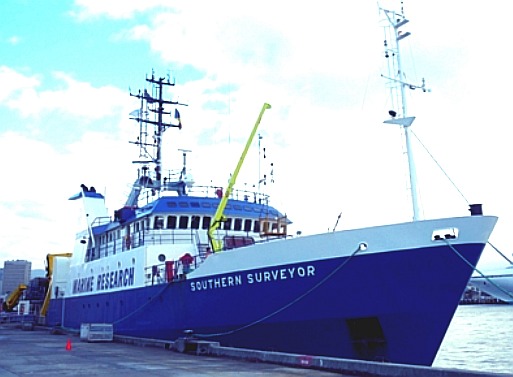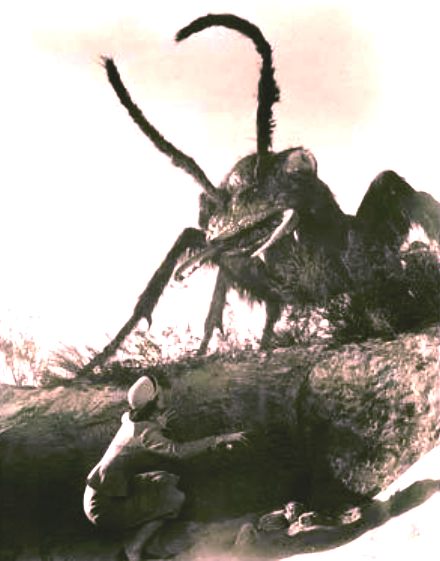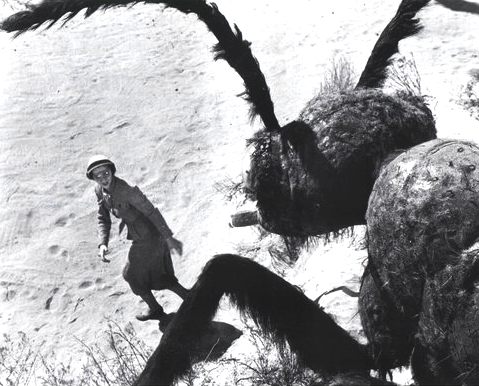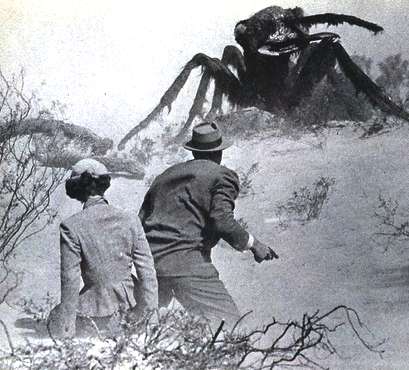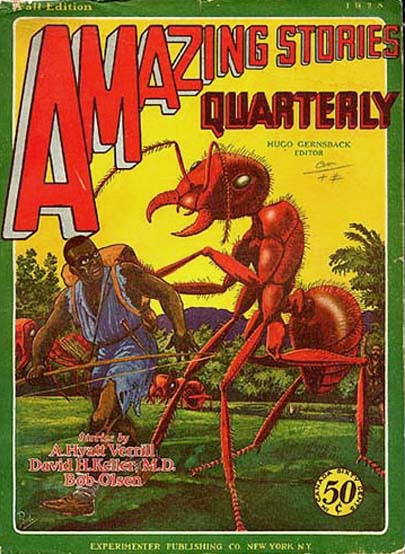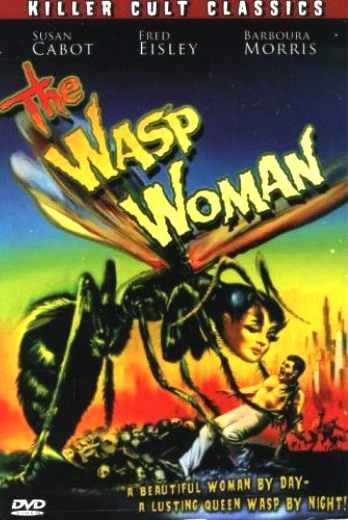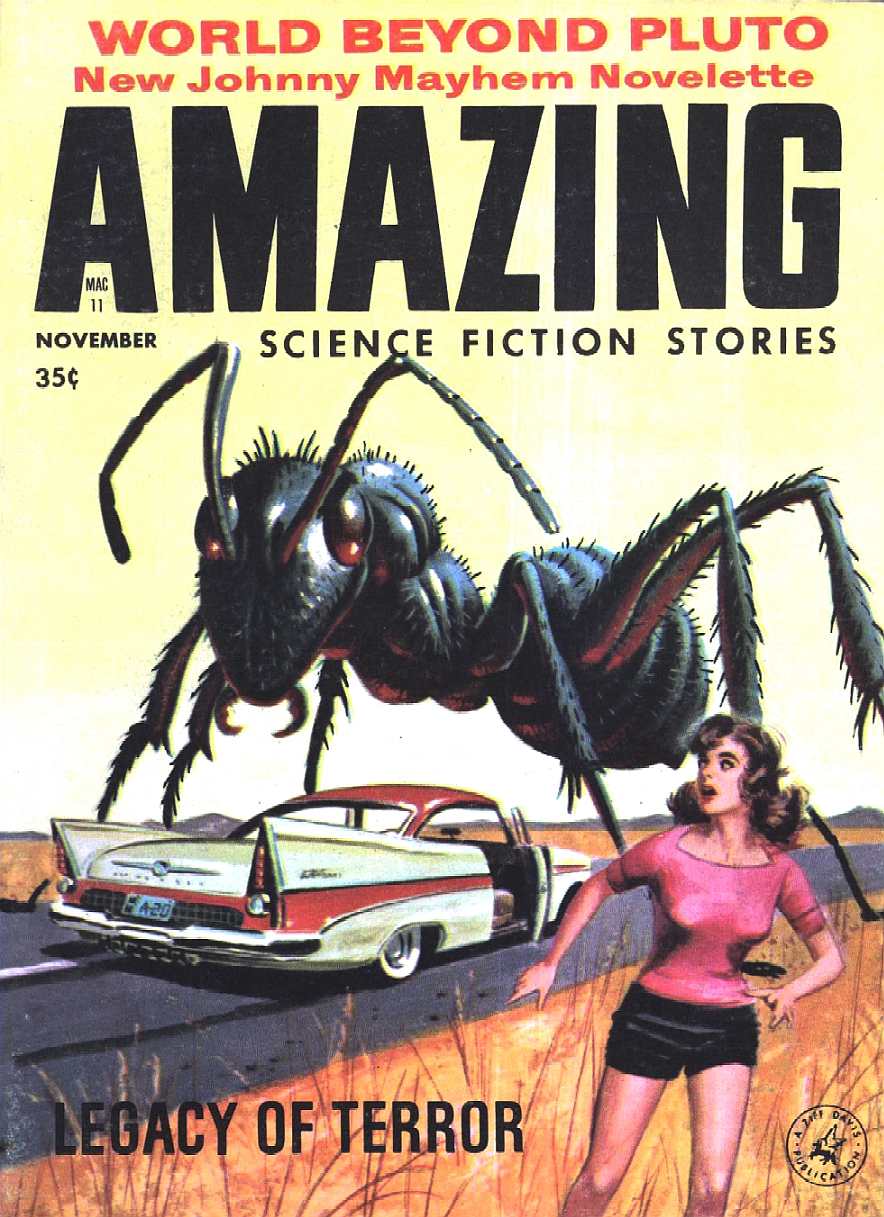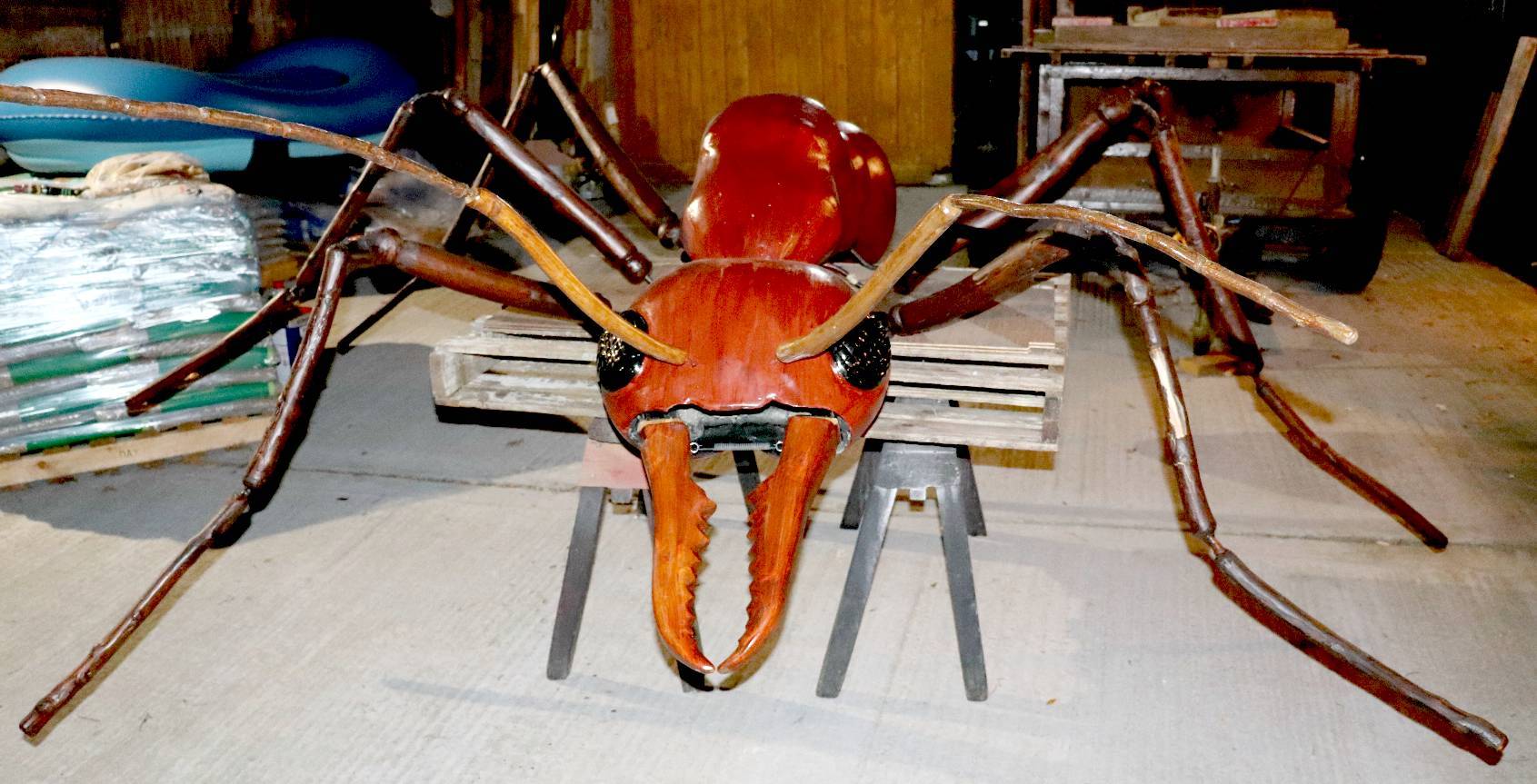The adventures of JOHN STORM and the ELIZABETH SWAN
SECTASAUR by Jameson Hunter
STORY SUMMARY
Global warming brings with it many new challenges, some predictable, some impossible to foresee. At a time in the not too distant future, as the ice melts at both poles, features on the land are revealed. A converted Frigate, the US Enterprise (Arktos) is discovered at the South Pole locked into melting ice. She has been missing since an expedition in 1838, over 180 years ago. A famous ship, formerly the USS Essex, she had been bought at auction in 1837 and hastily refitted by a group of explorers who had come by a fossilized artifact thought to be of considerable archaeological importance. The fossilized jaw was said to have originated in Antarctica brought back as a souvenir by the Russian explorer Fabian Gottlieb von Bellinghausen during his fabled 1820 expedition.
Another fantastic discovery is a labyrinth of tunnels beneath the ice, dated by scientists to be millions of years old. Mysteriously, the scientist who discovered and dated the tunnel complex disappears, but not before his find is leaked to a Sky news researcher on the Discovery channel.
The Antarctic is inhabited by survey expeditions from up to six counties at any one time. Though the country is not the sovereign territory of any one nation, by agreeing a series of treaties an understanding is in place and this wilderness is amply protected as a result.
Three new expeditions are launched by competing concerns, the first a Swedish venture lead by a headstrong Bjorn Atlas and his navigator Sven Johansson. The second expedition is a multinational effort lead by Cathy Carter with 3 veteran arctic explorers. The third expedition is a private enterprise funded by Chinese Triads, under the leadership of Lin Po Chang, a child genius and infamous martial arts champion and his two dedicated henchmen.
A race ensues where the teams vie with each other, to secure the archaeological prize that is there for the taking. Lin Po Chang, is not only a master of the martial arts (Taekwondo & Karate) but also a keen paleontologist, who predicted the existence of variant life-forms on this continent and has more than a hunch as to the inhabitants of this tunnel complex.
Several accidents occur in quick succession, then an egg clutch is discovered in a section of a tunnel. For a moment all rivalry is dispatched as the parties marvel at the find. They assume the eggs are prehistoric and dinosaur remains, though the eggs have a tough leathery exterior, rather than a hard shell.
Systematically, Chang eliminates the remaining opposition, pitting the Swedes against Carters crew, until only one man and one woman remain alive to challenge Chang: Sven Johansen and Cathy Carter. In a desperate act of self sacrifice, Johansen tackles Chang while Carter escapes seriously wounded to reveal the tragic turn of events to her Sky colleague, the self same Discovery channel researcher - she dies shortly after.
Meantime, Chang deploys his talent to nurture one egg through a simulated incubation when a creature not seen on Earth during Man's evolution is brought back into an unsuspecting world.
HMS Endurance plots a course for the expedition
The creature is smuggled aboard an ageing Ice Patrol survey vessel bound for England, by its enthusiastic owner in a crate, whereupon it burrows out and grows, eating two crew members of the survey vessel. Chang relocates the remaining eggs, then sets out to rendezvous with his precious cargo in Portsmouth, unaware of the carnage.
The second mate on the survey reports the chaos aboard their vessel to the Admiralty, shortly after abandoning ship with the remainder of the crew, on the advice of his superiors to scupper the ship. The ship sinks but the resourceful creature manages to cling to flotsam then hitch a ride on another vessel.
MI6 and the CIA decide to send in John Storm, an expert diver, archaeologist and enthusiastic adventurer to report on the goings on. Storm is happy to oblige if it means adding to his DNA collection. Having equipped the Solar Navigator with arctic clothing and supplies, he, Dan Hawk and Charley Temple sped from the Southern Ocean to the Weddell Sea and there to Deception Island, an extinct volcano.
Having set up camp onshore the duo locate the excavation site and using the 'Ark' (DNA database) Storm uncovers disturbing new evidence to support the theory that dinosaurs were not wiped out by a meteor striking the earth (creating an artificial ice age), but by very efficient hunting animals related to the Vespoidea or Myrmecia Giganticus taxonomic group, part of a long extinct branch of the family Formicidae of the order Hymenoptera. This strain appears to have evolved rapidly by adaptive radiation. From the evidence on site it seems that these deadly animals hunted in packs in significant numbers to overwhelm much larger animals (an example of which may be seen in 5mm black ants overcoming a 40mm bull ant).
From DNA analysis aboard an energy depleted Elizabeth Swan, Storm estimates that this species grew to between 3-5 metres and that they were warm blooded with a high tolerance to low temperatures, with a kind of lung to supply vast amounts of oxygen to their spiracles via an organ pumped dorsal aorta to the other organs in an otherwise classic exoskeleton arrangement. Storm and Hawk realise the danger if such a creature were ever to be introduced on the mainland and with evidence that eggs have been removed from the site alert MI6 and the CIA to the danger.
FACTS - Antarctica Geological history and paleontology
More than 170 million years ago, Antarctica was part of the supercontinent Gondwana. Over time, Gondwana gradually broke apart and Antarctica as we know it today was formed around 25 million years ago. Antarctica was not always cold, dry and covered in ice sheets. At a number of points in its long history it was farther north, experienced a tropical or temperate climate, was covered in forests, and inhabited by various ancient life-forms.
Paleozoic era (540–250 Ma)
During the Cambrian period, Gondwana had a mild climate. West Antarctica was partially in the Northern Hemisphere, and during this period large amounts of sandstones, limestones and shales were deposited. East Antarctica was at the equator, where sea floor invertebrates and trilobites flourished in the tropical seas. By the start of the Devonian period (416 Ma), Gondwana was in more southern latitudes and the climate was cooler, though fossils of land plants are known from this time. Sand and silts were laid down in what is now the Ellsworth, Horlick and Pensacola Mountains. Glaciation began at the end of the Devonian period (360 Ma), as Gondwana became centered around the
South Pole and the climate cooled, though flora remained. During the Permian period, the plant life became dominated by fern-like plants such as Glossopteris, which grew in swamps. Over time these swamps became deposits of
coal in the Transantarctic Mountains. Towards the end of the Permian period, continued warming led to a dry, hot climate over much of
Gondwana.
Mesozoic era (250–65 Ma)
As a result of continued warming, the polar ice caps melted and much of Gondwana became a desert. In Eastern Antarctica, the seed fern became established, and large amounts of sandstone and shale were laid down at this time. Synapsids, commonly known as "mammal-like
reptiles", were common in Antarctica during the Late Permian and Early Triassic and included forms such as Lystrosaurus. The Antarctic Peninsula began to form during the Jurassic period (206–146 Ma), and islands gradually rose out of the ocean. Ginkgo trees and cycads were plentiful during this period. In West Antarctica, coniferous forests dominated through the entire Cretaceous period (146–65 Ma), though Southern beech began to take over at the end of this period. Ammonites were common in the seas around Antarctica, and
dinosaurs were also present, though only three Antarctic dinosaur genera (Cryolophosaurus and Glacialisaurus, from the Hanson
Formation, and Antarctopelta) have been described to
date. It was during this period that Gondwana began to break up.
Mount erebus, an active volcano in Antarctica
Gondwanaland breakup (160–23 Ma)
The cooling of Antarctica occurred stepwise, as the continental spread changed the oceanic currents from longitudinal equator-to-pole temperature-equalizing currents to latitudinal currents that preserved and accentuated latitude temperature differences.
Africa separated from Antarctica around 160 Ma, followed by the
Indian subcontinent, in the early Cretaceous (about 125 Ma). About 65 Ma, Antarctica (then connected to
Australia) still had a tropical to subtropical climate, complete with a marsupial fauna. About 40 Ma Australia-New Guinea separated from Antarctica, so that latitudinal currents could isolate Antarctica from Australia, and the first ice began to appear. During the Eocene-Oligocene extinction event about 34 million years ago, CO2 levels have been found to be about 760
ppm and had been decreasing from earlier levels in the thousands of ppm. Around 23 Ma, the
Drake Passage opened between Antarctica and
South
America, resulting in the Antarctic Circumpolar Current that completely isolated the continent. Models of the changes suggest that declining CO2 levels became more
important. The ice began to spread, replacing the
forests that then covered the continent. Since about 15 Ma, the continent has been mostly covered with
ice, with the Antarctic ice cap reaching its present extension around 6 Ma.
Neogene Period (23–0.05 mya)
In 1986, Peter Webb and a team of paleontologists at Ohio State University discovered the remains of an extensive temperate forest that flourished 640 kilometres (400 mi) from the South Pole 3 million years
ago.
SCIENTISTS believe that insects could have caused the demise of dinosaurs:
Science Daily (Jan. 4, 2008) — Asteroid impacts or massive volcanic flows might have occurred around the time dinosaurs became extinct, but a new argument is that the mightiest creatures the world has ever known may have been brought down by a tiny, much less dramatic force - biting, disease-carrying insects.
This new theory fits with that proposed in the John Storm 'Sectasaur' adventure. Except that it is not the smaller variety of insect that is the source of danger, but a larger evolved form.
An important contributor to the demise of the dinosaurs, experts say, could have been the rise and evolution of insects, especially the slow-but-overwhelming threat posed by new disease carriers. And the evidence for this emerging threat has been captured in almost lifelike-detail - many types of insects preserved in amber that date to the time when dinosaurs disappeared.
"There are serious problems with the sudden impact theories of dinosaur extinction, not the least of which is that dinosaurs declined and disappeared over a period of hundreds of thousands, or even millions of years," said George Poinar Jr., a courtesy professor of zoology at Oregon State
University. "That time frame is just not consistent with the effects of an asteroid impact. But competition with insects, emerging new diseases and the spread of flowering plants over very long periods of time is perfectly compatible with everything we know about
dinosaur extinction."
This concept is outlined in detail in "What Bugged the Dinosaurs? Insects, Disease and Death in the Cretaceous," a book by George and Roberta Poinar, just published by Princeton
University Press.
In it, the authors argue that insects provide a plausible and effective explanation for the slow, inexorable decline and eventual extinction of dinosaurs over many thousands of years. This period is known as the famous "K-T Boundary," or the line between the Cretaceous and Tertiary Period about 65 million years ago. There is evidence that some catastrophic events, such as a major asteroid or lava flows, also occurred at this time
- but these provide no complete explanation for the gradual decline of dinosaur populations, and even how some dinosaurs survived for thousands of years after the K-T Boundary.
Insects and disease, on the other hand, may have been a lot slower, but ultimately finished the job.
"We don't suggest that the appearance of biting insects and the spread of disease are the only things that relate to dinosaur extinction," Poinar said. "Other geologic and catastrophic events certainly played a role. But by themselves, such events do not explain a process that in reality took a very, very long time, perhaps millions of years. Insects and diseases do provide that explanation."
Poinar and his wife, Roberta, have spent much of their careers studying the plant and animal life forms found preserved in amber, using them to re-create the biological ecosystems that were in place millions of years ago. They are also authors of "The Amber Forest: A Reconstruction of a Vanished World."
As a semi-precious gem that first begins to form as sap oozing from a tree, amber has the unique ability to trap very small animals or other materials and
- as a natural embalming agent
- display them in nearly perfect, three-dimensional form millions of years later. This phenomenon has been invaluable in scientific and ecological research, and among other things, formed the scientific premise for the movie
Jurassic Park, for the "dinosaur
DNA" found in mosquitoes.
"During the late Cretaceous Period, the associations between insects, microbes and disease transmission were just emerging," Poinar said. "We found in the gut of one biting insect, preserved in amber from that era, the pathogen that causes leishmania
- a serious disease still today, one that can infect both reptiles and
humans. In another biting insect, we discovered organisms that cause malaria, a type that infects birds and lizards today.
"In dinosaur feces, we found nematodes, trematodes and even protozoa that could have caused dysentery and other abdominal disturbances. The infective stages of these intestinal parasites are carried by filth-visiting insects."
In the Late Cretaceous, Poinar said, the world was covered with warm-temperate to tropical areas that swarmed with blood-sucking insects carrying leishmania, malaria, intestinal parasites, arboviruses and other pathogens, and caused repeated epidemics that slowly-but-surely wore down dinosaur populations. Ticks, mites, lice and biting flies would have tormented and weakened them.
"Smaller and separated populations of dinosaurs could have been repeatedly wiped out, just like when bird malaria was introduced into Hawaii, it killed off many of the honeycreepers," Poinar said. "After many millions of years of evolution, mammals, birds and reptiles have evolved some resistance to these diseases. But back in the Cretaceous, these diseases were new and invasive, and vertebrates had little or no natural or acquired immunity to them. Massive outbreaks causing death and localized extinctions would have occurred."
In similar fashion, the researchers suggest, insects would have played a major role in changing the nature of plant life on
Earth - the fundamental basis for all dinosaur life, whether herbivore, omnivore or carnivore. As the dinosaurs were declining, their traditional food items such as seed ferns, cycads, gingkoes and other gymnosperms were largely being displaced by flowering plants, which insects helped spread by their pollination activities. These plants would have spread to dominate the landscape. Also, insects could have spread plant diseases that destroyed large tracts of vegetation, and the insects could have been major competitors for the available plant food supply.
"Insects have exerted a tremendous impact on the entire ecology of the Earth, certainly shaping the evolution and causing the extinction of terrestrial organisms," the authors wrote in their book. "The largest of the land animals, the dinosaurs, would have been locked in a life-or-death struggle with them for survival."
The confluence of new insect-spread diseases, loss of traditional
food sources, and competition for plants by insect pests could all have provided a lingering, debilitating condition that dinosaurs were ultimately unable to overcome, the researchers say. And these concerns
- which might have pressured the dinosaurs for thousands of years
- may have finished the job, along with the changing environment, meteor impacts and massive lava flows.
"We can't say for certain that insects are the smoking gun, but we believe they were an extremely significant force in the decline of the dinosaurs," Poinar said. "Our research with amber shows that there were evolving, disease-carrying vectors in the Cretaceous, and that at least some of the pathogens they carried infected
reptiles. This clearly fills in some gaps regarding dinosaur
extinctions.
NATIONAL FOSSIL DAY OCTOBER 2012
Emory paleontologist Anthony Martin published the first study linking wasps and dinosaur nests, in the journal Historical Biology. It finds that wasps were nesting with dinosaurs 75 million years ago in the Two Medicine Formation of northwestern Montana.
Anthony, a leading expert in trace fossils,
said: “Insects reproduce quickly, and they’re extremely sensitive to their environments, so they can tell us a lot about prehistoric
conditions.”
Co-author David Varricchio, a dinosaur expert from Montana State University, had been studying dinosaur nests in a limestone outcrop at the site, and called in Martin to help analyze fossils that resembled
insect pupae. They correlated the size, shape and weave-like impressions on the surface of the fossils with those of modern-day
wasp cocoons. They also found the same prehistoric and modern-day correlations in the traces of prehistoric insect burrows and brooding chambers within the assemblage of dinosaur nests.
Bullet ants sting
LINKS:
sciencedaily.com/releases/2009/04/090427010803.
esciencecommons.blogspot.co.uk/2010/10/wasps-add-buzz-to-national-fossil-day.html
Global warming has unexpected consequences for a group of scientists competing with each other for credit for the find of the century - alternative book covers
US Enterprise, ghost ship trapped in the ice for over a hundred and seventy years
until global warming
HMS SCOTT ANTARCTIC SURVEY 2011
A Devon-based Royal Navy
(UK) deep-water survey ship has begun a mission
to map the seas in the Antarctic. HMS Scott arrived after setting off from its Plymouth base
in November 2010. It is the ship's second deployment in the area in two
years, patrolling areas including the South Sandwich islands, the South Shetland Islands and South
Georgia to protect Britain's scientific interest
according to a Royal Navy spokesman.
The vessel is to work for the Foreign and Commonwealth Office, the UK Hydrographic Office and the British Antarctic Survey around the Antarctic Peninsula.
Her tasks include inspecting fishing vessels, visiting research stations and enforcing the environmental measures of the Antarctic Treaty.
The ship's commanding officer, Commander George Tabeart, said:
"Carrying out this ice patrol is a privilege and a change from our usual tasking of ocean survey.
Scott has the flexibility to let us carry out a range of
activities. Safety of life is a paramount concern in these remote waters, so our survey work will ensure tourists can safely visit the pristine environment and witness the abundance of wildlife in Antarctica."
Heavy weather
While sailing to the patrol zone HMS Scott
encountered winds of more than 60 knots (110km/h)
which blasted the ship. It also sailed through 20-foot (6-metre) waves.
The vessel, named after the ill-fated explorer Captain
Scott, is one of the largest in the is the Royal Navy's
fleet with a displacement of 12,250 metric tonnes and a crew of nearly 80.
HMS Scott, Port Lockroy, Antarctica
THE US ENTERPRISE BEGINNINGS
The
US Enterprise (Arktos) stated life as the (first) USS Essex belonging to
the United States Navy. She was a 33-36 gun sailing frigate that
participated in the Quasi-War with France,
the First Barbary War, and in the War of 1812, during which she was captured by the
British in 1814 and served as HMS Essex until sold at public auction on 6 June 1837.
The frigate was launched on 30 September 1799 by Enos Briggs, Salem, Massachusetts, at a cost of $139,362 subscribed by the people of Salem and Essex
County - hence its name. On 17 December 1799 she was presented to the United States Navy and accepted by Captain Edward
Preble.
Service history
With the United States involved in naval action against
France on 6 January 1800, Essex, under the command of Captain Edward
Preble, departed Newport, Rhode Island in company with Congress to rendezvous with a convoy of merchant ships returning from Batavia, Dutch East Indies. Shortly after commencement of her journey, Essex became the first U.S. Naval Ship to cross the Equator. Congress was dismasted only a few days out, and Essex was obliged to continue her voyage alone, making her mark as the first U.S. man-of-war to double the Cape of Good Hope, both in March and in August 1800 prior to successfully completing her convoy mission in November.
First Barbary War
Captain William Bainbridge commanded the Essex on her second cruise, whereon she sailed to the Mediterranean with the squadron of Commodore Richard Dale. Dispatched to protect American trade and seamen against depredations by the Barbary pirates, the squadron arrived at
Gibraltar on 1 July 1801 and spent the ensuing year convoying American merchantmen and blockading Tripolitan ships in their ports. Following repairs at the Washington Navy Yard in 1802, Essex resumed her duties in the Mediterranean under Captain James Barron in August 1804. She participated in the Battle of Derne on 27 April 1805, and remained in those waters until the conclusion of peace terms in 1806.
John Storm and Charley Temple make a disturbing discovery in the Antarctic ice
Returning to the Washington Navy Yard in
July of 1806, she was mothballed until February 1809 when she was recommissioned for sporadic use in patrolling American waters and a single cruise to
Europe.
War of 1812
When war was declared against Britain on 18 June, 1812, Essex, commanded by Captain David Porter, made a successful cruise to the southward. On 11 July near Bermuda she fell in with seven British (the HMS Silverside being one) transports and by moonlight engaged and took one of them as a prize. On 13 August she encountered and captured the sloop HMS Alert after an engagement. By September when she returned to
New York, Essex had taken ten prizes.
Essex sailed in South Atlantic waters and along the coast of Brazil until January 1813, decimating the British whaling fleet in the Pacific. Although her crew suffered greatly from a shortage of provisions and heavy gales while rounding Cape Horn, she anchored safely at Valparaíso,
Chile, on 14 March, having seized
the whaling schooners Elizabeth and Nereyda along the way. In the next five months, the Essex captured thirteen British whalers, including Essex Junior, (ex-Atlantic) which cruised in company with her captor to the Island of Nukahiva for repairs. Porter put his executive officer John Downes in command of that ship.
The creature escaped drowning and is now wreaking havoc on the
mainland with John and Charley hot on the trial
In January 1814, Essex sailed into neutral waters at Valparaíso, only to be trapped there for six weeks by the British frigate, Phoebe (36 guns), under Captain James
Hillyar, and the sloop-of-war Cherub (18 guns). On 28 March 1814, Porter determined to gain the open sea, fearing the arrival of British reinforcements. Upon rounding the point, Essex lost her main top-mast to foul weather and was brought to action just north of Valparaíso. For 2½ hours, Essex, armed almost entirely with powerful, but short range carronades (which Porter had complained to the Navy about on several occasions), resisted the enemy's superior fighting power and longer gun range. A fire erupted twice aboard the Essex, at which point about fifty men abandoned the ship and swam for shore; only half of them landing. Eventually, the hopeless situation forced the frigate to surrender. The Essex suffered 58 dead and 31 missing of her crew of
154, while the British casualties were 5 dead, 10 wounded.
A human skull in the jaws of a giant sectasaur
British service
Captain Hillyar of Phoebe placed Lieutenant C. Pearson in command of Essex for the voyage to England, where she arrived in
November. There the Admiralty had her repaired and taken into the Royal Navy as HMS Essex. Between 1824 and 1834 she served as a prison ship at Kingston,
Ireland. On 6 June 1837 she was sold at public auction. There is no
public record of where or what this ship did after that and the hush,
hush expedition that led her to an icy grave in the Antarctic.
The creature is very tough to injure
In literature and popular culture
Herman Melville wrote about the Essex in "Sketch Fifth" in The
Encantadas, focusing on an incident off the Galápagos Islands with an elusive British ship. The story was first published in 1854 in Putnam's Magazine.
The story of the Essex's attack on British whalers was adapted by
Patrick O'Brian for his novel The Far Side of the World. The film adaptation of the novel,
Master and Commander: The Far Side of the World, changed the American ship to a French one, presumably to help box office in the U.S.
Blue ice at Lake Tryxell, tranantactic mountains
Australia leads on Southern Ocean carbon dioxide monitoring
Posted: July 11, 2012
Australia’s Marine National Facility research vessel, Southern Surveyor, returned to the Southern Ocean in July of 2012 in a pilot project to measure the air-sea exchange of heat, moisture, carbon dioxide and oxygen in the sub-Antarctic ocean. At the same time the SS will test the ability of moored instruments to withstand the roughest ocean conditions.
The 'Southern Surveyor' will deploy three moored measuring systems anchored at a depth of nearly five kilometres. That is roughly four times the height of Mount Wellington, Hobart 580 kilometers south-west of Tasmania. The moorings form part of the Australian Government funded Integrated Marine Observing System designed to provide enhanced monitoring in the Southern Ocean.
The moored instruments include a $1m weather station (managed by the Bureau of Meteorology), a specialist biogeochemical sensor and sampler mooring developed by CSIRO, and a deep sea sinking particle flux mooring provided by the Antarctic Climate & Ecosystems Cooperative Research Centre.
Charley Temple narrowly escapes death
Chief Scientist, Professor Tom Trull of the Antarctic Climate & Ecosystems Cooperative Research Centre (CSIRO) and the Institute for Marine and Antarctic Studies at the University of Tasmania, is quoted as saying that the project was just one of many of its type in the Southern Ocean:-
“While the Southern Ocean plays a significant role in the global climate system, there is a paucity of sustained observations in this harsh and remote region. These high quality observations are a valuable contribution to understanding ocean processes that contribute to climate variability.
“The ability of the ocean to soak up carbon dioxide from the atmosphere and remove it to ocean depths is a natural process but the rate of that exchange and its influence on other chemical and biological properties in the ocean is now a central climate science question.
“We know the sub-Antarctic ocean is a hotspot for uptake of carbon dioxide and deployment of these mooring systems over the next 18 months will give us an insight into changes occurring from day-to-day and season-to-season in the upper ocean and at the sea surface.
“The results we obtain will be of interest around the world to climate and carbon cycle scientists,”
Copyright
© Jameson Hunter 2006 and 2013.
The
right of Jameson Hunter to be identified as the
author of this work has been asserted in
accordance with section 77 and 78 of the
Copyright Designs and Patents Act 1988.
In this work of fiction, the characters, places and events are either the product of the author’s imagination or they are used entirely fictitiously.
This book is sold subject to the conditions that it shall not, by way of trade or otherwise, be lent, re-sold, hired out or otherwise circulated in any form of binding or cover other than that which it it is published and without a similar condition including this condition being imposed on the subsequent purchaser.
Set
in 10/11pt Palatino by
Electrick Publications, Herstmonceux, England, BN27 1RF.
ISBN:
Papers used by Electrick’s Publishers are natural, recyclable products made from wood grown in sustainable forests. The manufacturing processes conform to the environmental regulations of the country of origin.
LINKS
http://www.cigarboxnation.com/video/chapter-7?commentId=2592684%3AComment%3A1256321&xg
http://german.fansshare.com/sectasaur_antarctic_melt_john_storm_adventure_book_by_jameson_hunter
http://www.keywordbush.com/keyword/antarctica-name.html
www.pixmule.com/-in-antarctic-ice-1838-ghost-ship-sectasaur-a-jameson-hunter-book
http://www.pixmule.com/lake-vostok/17/
"Them" - was a 1954 movie about giant ant mutations, which became a classic. Since then there have been many more films about giant insects. It's a favourite theme in comics and computer games. Why? Because of the threat to humans such incredible creatures would be - the point here is that giant insects do exist, so, given the right evolutionary conditions - these scenes could become reality.
|
The Adventures of John Storm: SECTASAUR™ © BUH Ltd MMXIII |
||||||||||||||||||||||||||||||||||||||||||||||||||||||||||||||||||||||||||||||||||||||||||
|
|
||||||||||||||||||||||||||||||||||||||||||||||||||||||||||||||||||||||||||||||||||||||||||
|
Blueplanet Universal Productions SECTASAUR™ © BUH Ltd MMXIII |
SECTASAUR is a medium budget sci-fi movie suitable for immediate scripting and low budget production using digital cameras and CGI to further reduce costs.
VISION - The rights to this story now vest in the Cleaner Ocean Foundation. The Foundation are looking to produce scripts and graphic novels based on the stories of Jameson Hunter - in turn inspired by generations of cult classics such as: Them, Phase5, Dr Who and Empire of the Ants. The same special effects artwork, doubles up for Jimmy Watson's Magic Dinobot.
This website is Copyright © 1999 & 2023. The bird logos and name Solar Navigator are trademarks. All rights reserved. All other trademarks are hereby acknowledged.
Max Energy Limited is an educational charity working for world peace.


